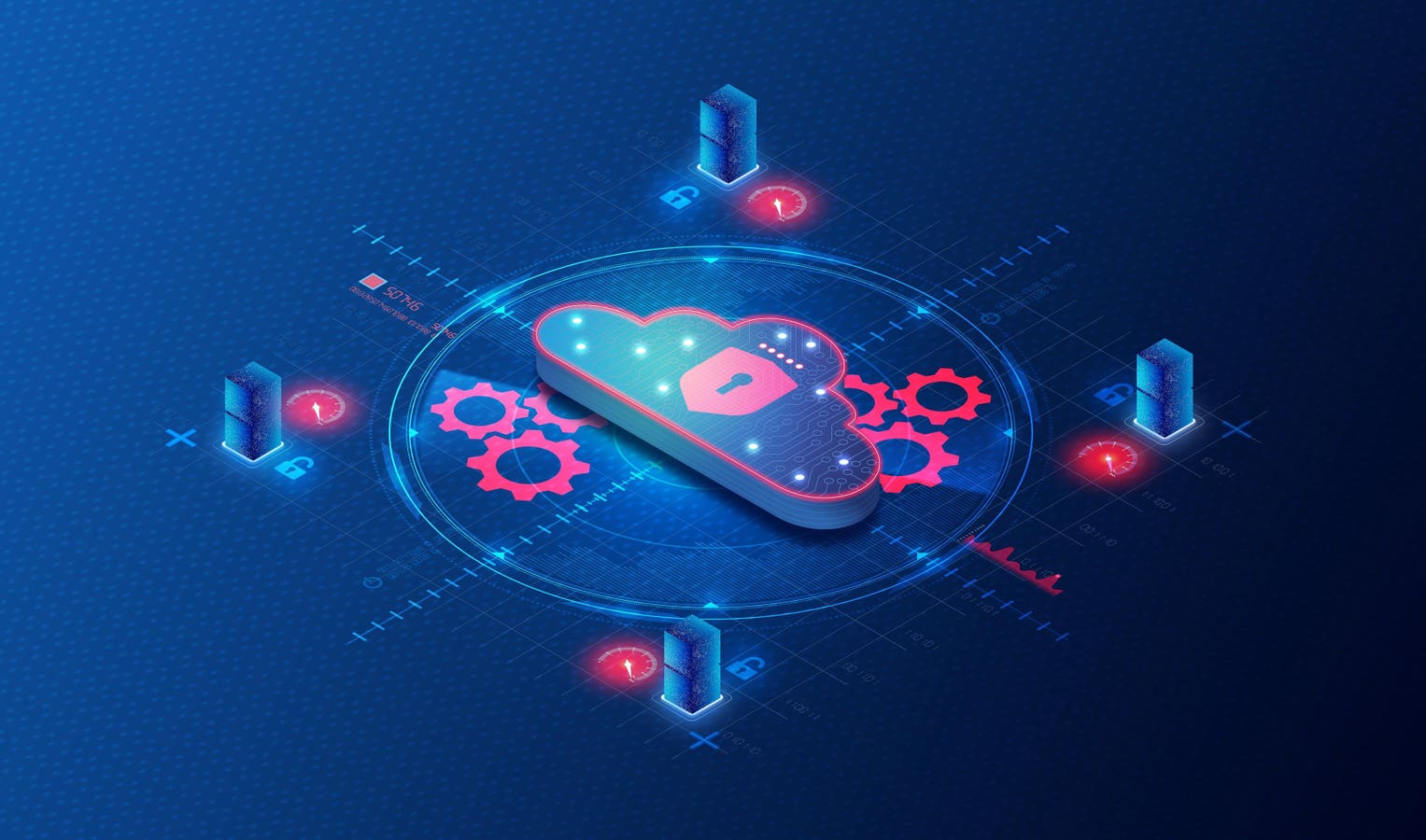Innovation and Technology
What Do B2B Customers Want?

Introduction to B2B Customer Needs
Understanding what your B2B customers really want is crucial for the success of your business. It’s about recognizing that B2B buyers are not just purchasing products or services; they are investing in solutions to their problems. To effectively cater to their needs, you must delve into the specifics of their requirements, preferences, and pain points.
Identifying Core Needs
At the heart of every B2B transaction is a customer seeking to fulfill specific needs. These can range from improving operational efficiency, reducing costs, to enhancing their product or service offerings. To identify these core needs, it’s essential to engage in thorough market research and maintain open lines of communication with your customers. This involves not just listening to their direct requests but also interpreting their indirect cues and feedback.
Understanding the Buying Process
The B2B buying process is complex and involves multiple stakeholders. It’s characterized by a lengthy decision-making cycle, with buyers conducting extensive research and comparing various options before making a purchase. Understanding this process is vital for tailoring your marketing efforts, sales approaches, and customer service to meet the buyers where they are in their decision-making journey.
Personalization and Customization
B2B customers increasingly expect a personalized experience similar to what they encounter in B2C transactions. This means offering customized solutions, tailored communications, and flexible pricing models that cater to the unique needs of each business. Personalization can be achieved through the use of data analytics, customer feedback, and innovative technologies that allow for real-time adaptation to customer preferences.
Building Trust and Loyalty
Trust is the foundation of any successful B2B relationship. It’s built through consistent delivery of quality products or services, transparency in business dealings, and a demonstrated commitment to customer satisfaction. Loyalty programs, regular updates on product development, and proactive customer support are strategies that can foster long-term relationships with B2B customers.
Leveraging Technology
Technology plays a pivotal role in enhancing the B2B customer experience. From e-commerce platforms designed for B2B transactions to digital tools that facilitate communication and collaboration, leveraging the right technology can streamline processes, improve response times, and provide valuable insights into customer behavior.
Effective Communication Strategies
Effective communication is key to understanding and meeting the needs of B2B customers. This involves not just the sales team but every point of contact within the organization. Training staff to be customer-centric, implementing efficient communication channels, and ensuring that feedback is acted upon promptly are critical strategies.
Regular Feedback and Adaptation
The needs and preferences of B2B customers can change rapidly. Regularly soliciting feedback through surveys, focus groups, and one-on-one meetings can provide valuable insights into these shifts. Being adaptable and responsive to this feedback demonstrates a commitment to customer satisfaction and can lead to long-term loyalty.
Conclusion
Understanding what your B2B customers really want is an ongoing process that requires dedication, flexibility, and a customer-centric approach. By identifying their core needs, personalizing the customer experience, building trust, leveraging technology, and maintaining effective communication, businesses can differentiate themselves in a competitive market and foster lasting relationships with their B2B customers.
FAQs
- Q: How do I identify the core needs of my B2B customers?
A: Through thorough market research, open communication, and analyzing customer feedback. - Q: What role does personalization play in B2B customer satisfaction?
A: Personalization is crucial as it allows for tailored solutions and communications that meet the unique needs of each business. - Q: How can technology enhance the B2B customer experience?
A: By streamlining processes, improving response times, and providing valuable insights into customer behavior through the use of digital tools and platforms. - Q: Why is building trust important in B2B relationships?
A: Trust is the foundation of successful B2B relationships, leading to loyalty, repeat business, and positive word-of-mouth. - Q: How often should I solicit feedback from my B2B customers?
A: Regularly, through various channels, to stay abreast of changing needs and preferences and to demonstrate a commitment to customer satisfaction.
Innovation and Technology
The Top Tools for Remote Sales Teams: Staying Connected and Closing Deals

In today’s fast-paced business world, Tools for hybrid and remote work are essential for sales teams to stay connected and close deals. With the rise of remote work, sales teams need to be equipped with the right tools to collaborate, communicate, and manage their sales pipeline effectively. In this article, we will explore the top tools for remote sales teams, including communication, collaboration, and sales management tools.
Communication Tools
Effective communication is critical for remote sales teams to stay connected and work together seamlessly. With the right communication tools, teams can collaborate, share information, and respond to customer inquiries in a timely manner.
Video Conferencing Tools
Video conferencing tools such as Zoom, Google Meet, and Skype enable remote sales teams to conduct virtual meetings, product demos, and sales pitches. These tools help to build trust and rapport with customers, and facilitate face-to-face interactions.
Instant Messaging Apps
Instant messaging apps like Slack, Microsoft Teams, and WhatsApp enable team members to communicate quickly and efficiently. These apps allow teams to share files, discuss sales strategies, and collaborate on sales projects.
Email and Phone Integration
Email and phone integration tools like Mailchimp and RingCentral enable sales teams to manage customer communications, track interactions, and respond to inquiries in a timely manner. These tools help to streamline sales operations and improve customer engagement.
Collaboration Tools
Collaboration tools are essential for remote sales teams to work together seamlessly. With the right collaboration tools, teams can share information, assign tasks, and track progress.
Project Management Tools
Project management tools like Trello, Asana, and Basecamp enable sales teams to manage sales projects, assign tasks, and track progress. These tools help to streamline sales operations, improve productivity, and enhance collaboration.
File Sharing and Storage
File sharing and storage tools like Dropbox, Google Drive, and OneDrive enable sales teams to share files, collaborate on documents, and access sales materials. These tools help to improve collaboration, reduce errors, and enhance sales productivity.
Sales Enablement Tools
Sales enablement tools like Showpad, Bigtincan, and Seismic enable sales teams to access sales content, track customer interactions, and analyze sales performance. These tools help to improve sales effectiveness, enhance customer engagement, and drive revenue growth.
Sales Management Tools
Sales management tools are critical for remote sales teams to manage their sales pipeline, track customer interactions, and analyze sales performance.
Crm Software
CRM software like Salesforce, HubSpot, and Zoho enable sales teams to manage customer relationships, track sales interactions, and analyze sales performance. These tools help to streamline sales operations, improve customer engagement, and drive revenue growth.
Sales Analytics Tools
Sales analytics tools like Tableau, Power BI, and Domo enable sales teams to analyze sales performance, track customer behavior, and identify sales trends. These tools help to improve sales effectiveness, optimize sales strategies, and drive revenue growth.
Sales Automation Tools
Sales automation tools like Mailchimp, Constant Contact, and Marketo enable sales teams to automate sales tasks, personalize customer communications, and improve sales productivity. These tools help to streamline sales operations, enhance customer engagement, and drive revenue growth.
Conclusion
In conclusion, the right tools are essential for remote sales teams to stay connected, collaborate, and close deals. By leveraging communication, collaboration, and sales management tools, sales teams can improve productivity, enhance customer engagement, and drive revenue growth. Whether you’re a small business or a large enterprise, investing in the right tools can help you stay ahead of the competition and achieve your sales goals.
Frequently Asked Questions
What are the benefits of using communication tools for remote sales teams?
The benefits of using communication tools for remote sales teams include improved collaboration, enhanced customer engagement, and increased productivity.
How can collaboration tools improve sales productivity?
Collaboration tools can improve sales productivity by enabling teams to share information, assign tasks, and track progress. These tools help to streamline sales operations, reduce errors, and enhance collaboration.
What are the key features of sales management tools?
The key features of sales management tools include CRM software, sales analytics, and sales automation. These tools help to streamline sales operations, improve customer engagement, and drive revenue growth.
How can sales teams measure the effectiveness of their sales tools?
Sales teams can measure the effectiveness of their sales tools by tracking key performance indicators (KPIs) such as sales revenue, customer satisfaction, and sales productivity. By analyzing these metrics, sales teams can identify areas for improvement and optimize their sales strategies.
What are the best practices for implementing sales tools for remote sales teams?
The best practices for implementing sales tools for remote sales teams include providing training and support, establishing clear communication channels, and monitoring progress regularly. By following these best practices, sales teams can ensure a smooth transition to new sales tools and maximize their effectiveness.
Innovation and Technology
Smarter Security Operations

Introduction to Security Operations Centers
Security Operations Centers are meant to be the command hubs of cybersecurity. But many are bogged down by tool sprawl, false alerts and burned-out teams. Splunk’s State of Security 2025 report shows that security teams are spending more time maintaining tools than stopping threats—and it’s costing them.
I sat down with Michael Fanning, CISO at Splunk, to talk about what insights the reports revealed for him. He summed it up clearly: “The future SOC is extremely streamlined. Analysts will be freed from mundane, repetitive tasks, so they can apply their expertise where it truly matters: defending the organization.”
Too Many Tools, Too Little Time
SOCs today face a flood of alerts. About 59% of respondents say they get too many, and 55% are dealing with too many false positives. That slows down response times and wears down teams. Nearly half of security professionals say they spend more time managing tools than actually protecting systems.
Fanning noted that this isn’t just inefficient—it’s demoralizing. Spending an hour on a low-value alert that turns out to be nothing is frustrating, and it adds up fast. Downtime during an incident can cost over $500,000 per hour.
AI Is Helping—But It’s Not Magic
AI is already making a difference in the SOC. About 59% of security leaders say it has improved their team’s efficiency. Fanning was surprised by how many teams have already started using it. “Greater than 50% of the respondents had mentioned that their security operations are already adopting AI in some form or fashion.”
But AI is not a fix-all. It still needs oversight. Only 11% of respondents fully trust AI for mission-critical decisions. Most prefer a “human-in-the-loop” approach. That means AI helps with repetitive tasks, but people still make the final call.
Fanning put it this way: “I don’t see it as a complete replacement, but more of an aid to help an engineer or an analyst do their job faster than they were before.”
Rethinking Detection for the Real World
Detection engineering is a top skill for modern security teams—but also one of the hardest to find. About 41% of teams say they lack it. Detection as Code is catching on because it lets teams create, test and improve detections like software. But only a third of organizations are using it regularly.
Fanning stressed that quality detection is key. With good data and smart rules, analysts waste less time and respond faster. Better alerts mean better decisions.
Burnout and the Vanishing Foundation
Overwork is a serious problem. More than half of SOCs report staff burnout. Many professionals have even thought about leaving the field.
Some automation can help—but it also raises new questions. If AI handles the basics, how will new analysts learn the fundamentals? Fanning pointed out that his early help desk experience gave him the skills to succeed in cybersecurity. If junior staff skip that step, they may lack the deeper knowledge needed to solve complex problems.
Splunk’s own SOC has automated many tier-one tasks. But instead of cutting jobs, they use the freed-up time for higher-priority work. It’s about shifting focus, not shrinking teams.
Bringing It All Together
One major problem is tool sprawl. Seventy-eight percent of respondents say their tools don’t work well together. That makes fast response harder. When teams adopt a unified platform, they report better results—faster response times, less tool upkeep and stronger coverage.
Security is no longer just a job for the SOC. It takes support from across the company—from HR and IT to legal and engineering. But only a small number of teams always share data across these departments. Fanning says that building those connections is crucial for quicker, more accurate responses.
The Path Forward
The future of the SOC is about using people, processes and platforms in a smarter way. That means making thoughtful use of AI, improving detection methods, closing skill gaps and unifying security workflows.
The threats are faster, and the stakes are higher. But the Splunk report suggests that with the right strategy, SOCs can keep up—and even get ahead.
Conclusion
Security Operations Centers are facing numerous challenges, including tool sprawl, false alerts, and burnout. However, with the help of AI, streamlined workflows, and a unified approach, SOCs can overcome these challenges and become more efficient and effective. By adopting a smarter approach to security, organizations can reduce the risk of cyber threats and protect their assets.
FAQs
Q: What is the main challenge facing Security Operations Centers today?
A: The main challenge facing Security Operations Centers today is tool sprawl, false alerts, and burnout.
Q: How can AI help Security Operations Centers?
A: AI can help Security Operations Centers by improving their team’s efficiency, automating repetitive tasks, and providing better detection methods.
Q: What is the importance of a unified platform in Security Operations Centers?
A: A unified platform is important in Security Operations Centers because it allows teams to work together more effectively, reduces tool upkeep, and provides stronger coverage.
Q: How can organizations reduce the risk of cyber threats?
A: Organizations can reduce the risk of cyber threats by adopting a smarter approach to security, using people, processes, and platforms in a more effective way, and making thoughtful use of AI and detection methods.
Innovation and Technology
Insurance in the Digital Age: Strategies for Managing Risk and Building Resilience

In today’s fast-paced world, digital transformation strategies are revolutionizing the insurance industry, enabling companies to better manage risk and build resilience. With the rise of technology, insurers can now leverage data analytics, artificial intelligence, and other digital tools to improve their operations and provide more personalized services to their customers. As the insurance landscape continues to evolve, it’s essential for companies to adapt and innovate to stay ahead of the curve.
Understanding the Digital Landscape
The insurance industry is undergoing a significant transformation, driven by advances in technology and changing consumer behavior. The proliferation of digital channels, such as online platforms and mobile apps, has created new opportunities for insurers to engage with customers and provide more convenient services. However, this shift also brings new risks, such as cyber threats and data breaches, which insurers must be prepared to mitigate.
The Impact of Digitalization on Insurance
Digitalization is having a profound impact on the insurance industry, from underwriting and claims processing to customer service and marketing. Insurers are using data analytics and machine learning algorithms to better assess risk and personalize policies, while also improving the efficiency of their operations. Additionally, digital platforms are enabling insurers to reach new customers and provide more flexible and affordable products.
Key Trends in Digital Insurance
Several key trends are shaping the digital insurance landscape, including the use of telematics and wearable devices to monitor customer behavior, the rise of peer-to-peer insurance models, and the increasing importance of cybersecurity. Insurers must stay ahead of these trends to remain competitive and provide value to their customers.
Building Resilience in a Digital World
Building resilience is critical for insurers in a digital world, where risks are evolving and intensifying. This requires a proactive approach to risk management, including the use of advanced analytics and scenario planning to identify and mitigate potential threats. Insurers must also invest in robust cybersecurity measures to protect their customers’ data and prevent cyber attacks.
Strategies for Managing Risk
To manage risk effectively, insurers should adopt a range of strategies, including diversification, hedging, and reinsurance. They should also invest in employee training and education to ensure that staff are equipped to handle complex risks and respond to emerging threats. Furthermore, insurers should engage with regulators and industry bodies to stay informed about changing regulatory requirements and best practices.
Role of Technology in Risk Management
Technology plays a vital role in risk management, enabling insurers to analyze large datasets, identify patterns, and predict potential risks. Insurers can use tools such as predictive modeling and machine learning to anticipate and prepare for emerging threats, reducing the likelihood of losses and improving their overall resilience.
Creating a Digital-First Culture
To succeed in a digital world, insurers must create a digital-first culture that prioritizes innovation, agility, and customer-centricity. This requires a fundamental shift in mindset, from a traditional, product-focused approach to a more flexible, customer-driven model. Insurers should invest in digital talent and capabilities, including data scientists, software developers, and user experience designers.
Importance of Customer Experience
Customer experience is critical in a digital world, where customers expect seamless, personalized interactions with insurers. Insurers should use data analytics and customer feedback to design products and services that meet customers’ evolving needs, while also providing multichannel support and engagement.
Role of Innovation in Digital Insurance
Innovation is essential in digital insurance, enabling insurers to stay ahead of the competition and address emerging customer needs. Insurers should invest in research and development, collaborating with startups, fintech companies, and other industry partners to leverage new technologies and business models.
Conclusion
In conclusion, the insurance industry is undergoing a significant transformation, driven by digital transformation strategies and changing consumer behavior. To manage risk and build resilience, insurers must adopt a proactive approach to risk management, leveraging advanced analytics, scenario planning, and robust cybersecurity measures. By creating a digital-first culture, prioritizing customer experience, and investing in innovation, insurers can stay ahead of the curve and provide value to their customers in a rapidly evolving landscape.
Frequently Asked Questions
What is digital transformation in insurance?
Digital transformation in insurance refers to the use of digital technologies, such as data analytics, artificial intelligence, and online platforms, to improve the efficiency, agility, and customer-centricity of insurance operations.
How is digitalization impacting the insurance industry?
Digitalization is having a profound impact on the insurance industry, from underwriting and claims processing to customer service and marketing. Insurers are using data analytics and machine learning algorithms to better assess risk and personalize policies, while also improving the efficiency of their operations.
What are the key trends in digital insurance?
Key trends in digital insurance include the use of telematics and wearable devices to monitor customer behavior, the rise of peer-to-peer insurance models, and the increasing importance of cybersecurity.
How can insurers build resilience in a digital world?
Insurers can build resilience in a digital world by adopting a proactive approach to risk management, including the use of advanced analytics and scenario planning to identify and mitigate potential threats. They should also invest in robust cybersecurity measures to protect their customers’ data and prevent cyber attacks.
What is the role of technology in risk management?
Technology plays a vital role in risk management, enabling insurers to analyze large datasets, identify patterns, and predict potential risks. Insurers can use tools such as predictive modeling and machine learning to anticipate and prepare for emerging threats, reducing the likelihood of losses and improving their overall resilience.
-

 Career Advice5 months ago
Career Advice5 months agoInterview with Dr. Kristy K. Taylor, WORxK Global News Magazine Founder
-

 Diversity and Inclusion (DEIA)5 months ago
Diversity and Inclusion (DEIA)5 months agoSarah Herrlinger Talks AirPods Pro Hearing Aid
-

 Career Advice5 months ago
Career Advice5 months agoNetWork Your Way to Success: Top Tips for Maximizing Your Professional Network
-

 Changemaker Interviews5 months ago
Changemaker Interviews5 months agoUnlocking Human Potential: Kim Groshek’s Journey to Transforming Leadership and Stress Resilience
-

 Diversity and Inclusion (DEIA)5 months ago
Diversity and Inclusion (DEIA)5 months agoThe Power of Belonging: Why Feeling Accepted Matters in the Workplace
-

 Global Trends and Politics5 months ago
Global Trends and Politics5 months agoHealth-care stocks fall after Warren PBM bill, Brian Thompson shooting
-

 Global Trends and Politics5 months ago
Global Trends and Politics5 months agoUnionization Goes Mainstream: How the Changing Workforce is Driving Demand for Collective Bargaining
-

 Training and Development5 months ago
Training and Development5 months agoLevel Up: How Upskilling Can Help You Stay Ahead of the Curve in a Rapidly Changing Industry



















